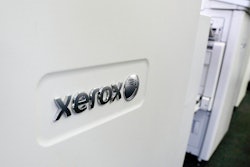
The shift to predictive maintenance will be gradual throughout the new decade and will not be an easy road for many companies. However, in some industries, it may come down to survival of the fittest, and doing so will help a company’s chances. With the increase in technology options to help navigate the shift, 2020 will see more companies modernizing their maintenance programs and beginning this transition away from large-scale reliance on reactive maintenance.
A predictive maintenance program increases consistency and efficiency and reduces waste in numerous ways compared to reactive maintenance, even though some companies have found it daunting to make the switch. Advances in technology are making the transition simpler and more attainable than it was in the past.
Mobile, wireless, and cloud-based technologies used together as Industrial Internet of Things (IIoT) systems are making it easier for teams to integrate their assets, systems and teams. These technologies were previously “nice to have.” In today‘s ever-competitive industrial market, they’ve become “need to have.” They’ve made it possible for information to be centralized and accessible, and for vast amounts of data to be transformed into actionable insights. The Fluke Connected Reliability suite is one example of such technologies.
Such connected systems bring asset and maintenance data and workflows together, eliminate data silos and gaps, and give maintenance teams an accurate picture of asset health in real time—and the ability to trend performance over time. With user-friendly wireless inspection tools and sensors, maintenance teams can easily collect data, pinpoint abnormalities and determine what steps to take and when.
Predictive maintenance involves monitoring asset condition during normal operation. This way, problematic performance indicators are identified in real time, and maintenance teams can take corrective action before an asset's condition deteriorates too far and leads to costly unplanned downtime. Armed with accurate data, maintenance teams can keep assets up and running—and extend their life expectancy. Instead of reacting to problems as they arise, maintenance teams can prioritize their work and increase their efficiency. Better data drives better decisions and better outcomes.
Reactive maintenance, on the other hand, happens when assets have already broken down and stopped performing as intended. Some amount of reactive maintenance will always exist at most companies. But complete reliance on it can be expensive over the long term. Companies must either keep extensive and costly parts inventories on hand or pay pricey expedited shipping fees to get necessary parts on short notice. When assets aren't performing as intended, they consume more energy, driving up spending. It is impossible to maximize labor spending when maintenance actions aren't planned in advance. Ultimately, reactive maintenance can mean lost productivity, damaged products, late deliveries, and lost customers.
There are safety implications to a reactive maintenance strategy as well. When maintenance teams are trying to get assets running again quickly, they are operating with a sense of urgency. They may take risks or fail to follow best practices in their desire to get assets back on line. Plant-floor workers are subject to hazardous environments and potential injury.
With a connected system, teams can take advantage of features such as asset health alarms, triggered when asset conditions reach designated thresholds, or automatic work order generations. Work completion rates increase with improved record-keeping. And, because condition monitoring means that failures can be anticipated and planned for, maintenance teams only need limited inventories on hand. Planned and prioritized maintenance actions mean unnecessary labor and excess energy costs are eliminated, too. More efficient work processes and reduced mistakes caused by data entry errors lead to both time and cost savings.
But to move from reactive to predictive maintenance, M&R teams need a plan.
Teams don't even need to move completely to predictive maintenance to see benefits. The best way to start migrating to a predictive maintenance program is to conduct a pilot program on a limited number of assets. Maintenance teams can identify their most critical assets and components and start on a limited basis. This process allows for proving the concept and gaining buy-in at all levels, from technicians to leadership.
Instead of maintenance and reliability being viewed as a drag on a company's bottom line, a predictive maintenance strategy helps teams prove that they can be a business value engine—boosting asset longevity and uptime, reducing unnecessary spending and downtime, and providing more consistency overall. More and more companies in 2020 and beyond will align with this thinking.
Kevin Clark, CMRP, is Vice President of Fluke Reliability. He has more than 25 years of experience in operations leadership. For more on what 2020 will bring watch this Fluke Accelix Best Practice Webinar on-demand.






















